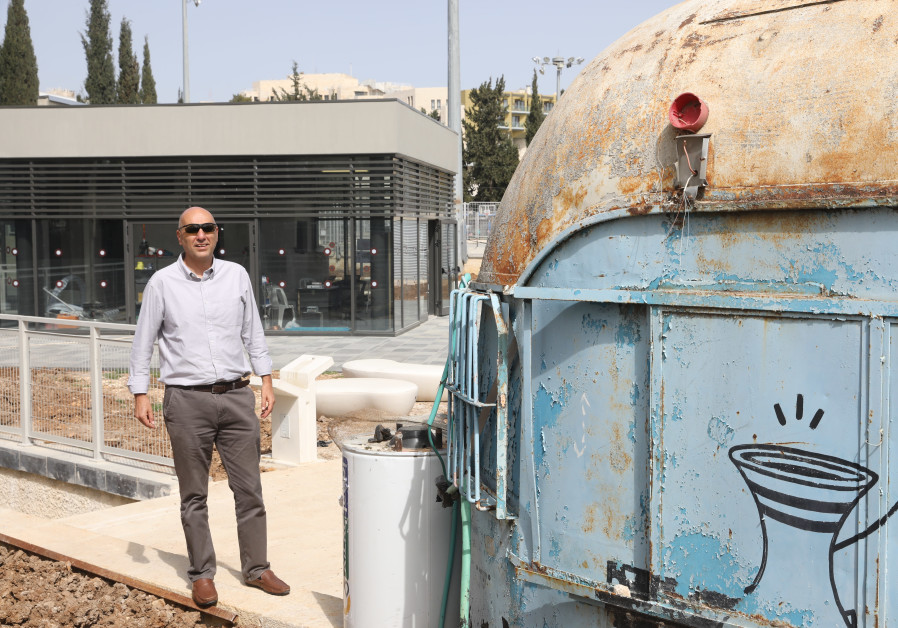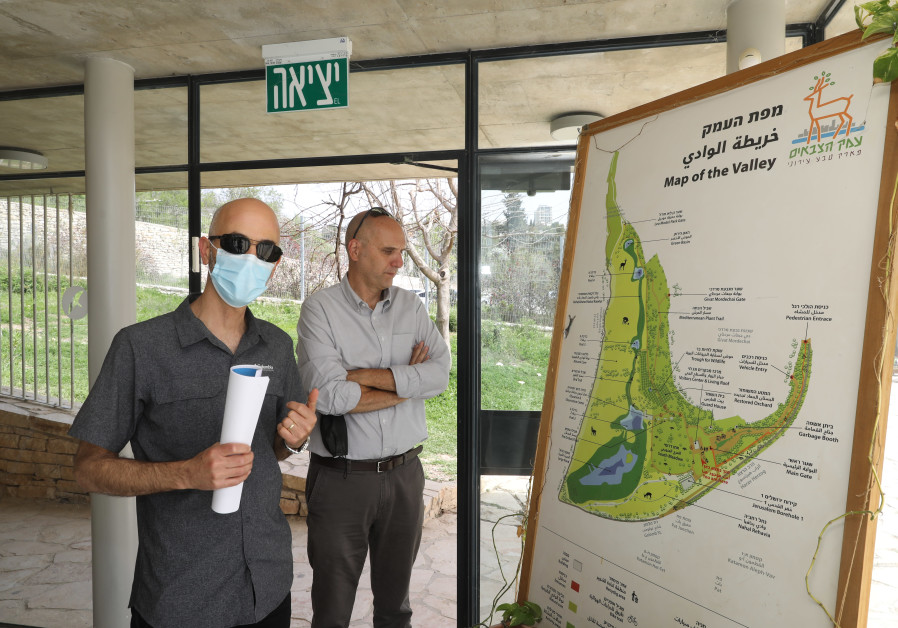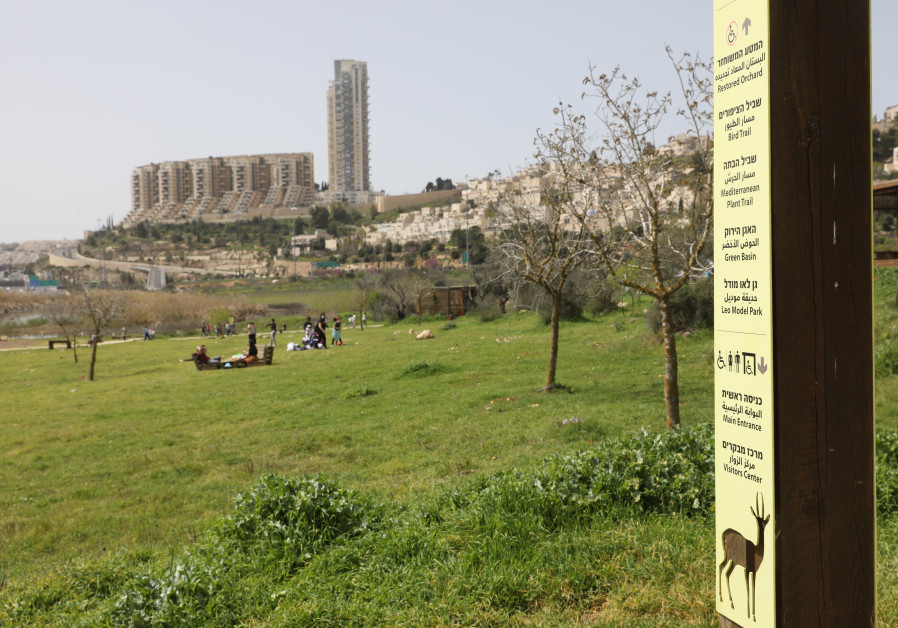Feelings of joy and expectation permeate the crisp Jerusalem air on a sunny March morning. After a prolonged, dreary and depressing COVID-19 winter, the capital is reawakening. One is hard-pressed to find a better way to get a sense of Jerusalem’s renewal than by taking a tour about town with staff from the Jerusalem Foundation, which promotes development within the city and raises funds for social, cultural and beautification projects.
A year’s worth of Zoom interviews has given this writer the itch to conduct face-to-face interviews outside the confines of a 23-inch screen. Jerusalem Foundation staff, led by Shai Doron, the organization’s president, and Roi Singer, architect and director of the foundation’s planning and construction department, are equally delighted to leave their offices and display some of the new projects under development.

Both feature advanced audio, lighting and projection systems and can be used for a wide variety of presentations and performances. Doron envisions that puppet theater performances will continue for children by day, and by night the auditorium will be used for the benefit of other Jerusalem residents.
“The idea,” he explains, “is to make the place into a cultural center that will be active day and night and on weekends, for musical performances, theater and dance and stand-up comedy, conferences and culture. Jerusalem needs a cultural center like this.”
The NIS 25 million complex, comprised of cubed structures, stands adjacent to the original locomotive car of the Train Theater, which will continue to be used as a community library. The new complex is built according to the latest green standards, including design, construction materials and heating and cooling systems. For Doron, it is part of the Jerusalem Foundation’s Creative Culture initiative that makes the creativity of Jerusalem accessible to different groups of city residents. It is clearly the jewel in the crown of Jerusalem Foundation development.
Our next stop takes us to a far less glamorous section of Jerusalem – the seam line between the Pat neighborhood and Beit Safafa. Donning hard hats, we enter the building site on the campus of Yad B’Yad (the Max Rayne Hand in Hand school), a bilingual, multicultural school for Jewish and Arab students supported by the Jerusalem Foundation. Yad B’Yad includes a kindergarten, primary school and high school.
“Learning better together is part of the underpinning of the Jerusalem Foundation,” says Doron. In 2019, the foundation began construction of a separate building for the high school – enabled by friends from Austria, Canada, Lichtenstein, Germany, Switzerland, the UK and the Jerusalem Municipality – which will be completed in time for the beginning of the next school year in September.
“The school is located on the seam line between the two neighborhoods, which is symbolic in and of itself,” he notes. The NIS 40 million project, which is also being built as a green structure, epitomizes the idea of communal strength, one of the linchpins of the foundation’s 2030 Project for Jerusalem, which is intended to strengthen the social fabric and community support systems of Jerusalem. An additional neighborhood-friendly facet of the project is the addition of an auditorium designed to be used by the community as well as for school events.

IT’S A short five-minute ride to the Gazelle Valley Park, opposite the Pat Intersection, where we view an upcoming Jerusalem Foundation project. On a late weekday morning, the park is filled with students and families enjoying the warm weather and nature. The park is managed by the Society for the Protection of Nature in Israel and was created years ago, after local community members fought to keep the area as a nature preserve, free of real estate development and construction.
The Jerusalem Foundation will soon begin construction on an educational and research center that will blend into the park’s environment. It will serve as a center for both urban ecological research and for research into the deer that roam throughout the park, and will offer a lookout point where visitors can view the deer. In addition, a glass wall will be built adjacent to the edge of the park stream to provide underwater views of marine life.
Continuing our outdoor tour, we pull up at the Jerusalem Botanical Gardens, a 60-acre park located between the Knesset, the Hebrew University of Jerusalem’s Givat Ram campus and the Israel Museum. The gardens, which opened in 1985, were created jointly by the Hebrew University, the Jewish National Fund and the Jerusalem Foundation as a living museum of plants and an outdoor laboratory for scientific research. With the relaxation of corona restrictions, the park’s outdoor eating areas are rapidly filling and Jerusalem residents are enjoying the botanical beauty.
Last summer, as the pandemic raged, the Botanical Gardens sponsored an outdoor sculpture exhibit which, Doron explains, provided an outlet for art appreciation when most displays were shuttered. As we take a brief respite from our tour, Singer and Doron outline some of the significant projects the Jerusalem Foundation is about to undertake at the Botanical Gardens.
With the construction of the new Highway 16 at the western entrance to Jerusalem, access to the gardens will change, and the foundation is planning the construction of a new pavilion and entrance, to be called the Marcus Margulies Pavilion. In addition, Doron explains, the foundation will be building a new urban sustainability center at the gardens that will support the third anchor of the Jerusalem 2030 plan, future leadership.
The center, which the foundation’s Canadian friends are donating, will house many of the city’s urban sustainability organizations in one hub, thus creating greater interaction between the bodies and ultimately leading to better ecological and civic leadership.
Singer then pulls out a map and discusses another project on the Jerusalem Foundation’s drawing board: a new musical conservatory building for the Hassadna Music Conservatory. The conservatory, founded in 1973, works with some of Israel’s top music professionals to bring music education to more than 600 students from every sector of Israeli society, including underprivileged youth. The conservatory currently meets in a school building, and the foundation is planning the construction of a new headquarters near Emek Refaim Street, which will also feature a neighborhood music center set to integrate with the area as a whole.


“Music is not language-dependent,” notes Doron, “and is a great tool for mobility in society.” The building will be structured with acoustic sensitivities in mind so neighbors will not be awakened by music at all hours of the day or night.
The day’s final stop is at a large construction site in the Romema neighborhood, where the Jerusalem Foundation is participating in the construction of the city’s first adult day care center for the haredi community. Funding is being provided by the city and the foundation, which raised money for the project from donors around the world. Roi notes that both the building and the programs offered will be adapted for the specific needs and interests of haredim.
As we make our way back to Jerusalem Foundation headquarters, Doron and Singer speak of other projects in the works or nearing completion, including the building of two new sports centers in east Jerusalem, an outdoor sports center in Gilo, combined with a project to upgrade and improve the educational system in the area, and the planned makeover of the Sultan’s Pool, transforming it into a year-round attraction.
Doron and his team at the Foundation are looking at the big picture of Jerusalem – one that considers the needs and interests of all the city’s residents.
“The Jerusalem Foundation is for Jews and Arabs, the secular and the observant,” he affirms.
The vast array of projects we visited on our whirlwind tour – the Davidson Theater, Yad B’Yad School, Gazelle Park, Botanical Gardens, and center for the elderly in the haredi community – illustrate the lengths the foundation is going to fulfill that promise.
